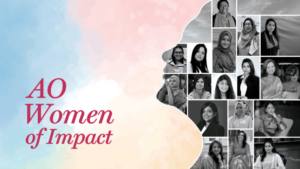SM Mannan (Kochi), a person wearing many hats like Secretary General of Awami League Dhaka North City, MD of Seha Design (BD) Ltd., to mention a few, is the new President of BGMEA. Under his leadership, Sammilito Parishad attained landslide victory in the BGMEA elections of 2024-26, bagging votes for 35 out of 35 directors. He has got the responsibility at a time when the industry is going through a very tough phase and lots of challenges lie ahead in the near future. In a detailed discussion with Apparel Resources, he underlined that his focus will remain on upholding BGMEA’s vision while exploring new opportunities and collaborations to ensure the sustainability of the RMG industry. Strengthening advocacy efforts to represent the interests of the garment industry at both national and international levels will also be his prime concern.
AR: You were already Senior Vice President in BGMEA and now as a President, what fresh approach do you wish to bring to the working of BGMEA?
SM Mannan: In line with BGMEA’s legacy, we are undergoing a transition as the newly elected Board assumes responsibility for the tenure 2024-26. While the Board is new, our perspective remains unchanged. We find ourselves amidst unprecedented times, with the global economy confronting significant challenges and uncertainties. The ongoing pandemic, geopolitical tensions and rapid technological advancements have contributed to a volatile and unpredictable business environment worldwide. Internally, we also face challenges and limitations that require attention.
As President of BGMEA, I have the privilege of bringing experiences gained from my tenure as Senior Vice President, as well as from my broader professional background. While some of my colleagues on the new Board are re-elected and experienced in leading the association, the addition of new and young faces brings fresh insights and experiences to the table.
During my Board’s tenure, our focus will be on upholding BGMEA’s vision while exploring new opportunities and collaborations to ensure the sustainability of our industry. Our approach will aim to make BGMEA an engaging platform that fosters collaboration, innovation and inclusivity. We recognise the importance of creating an environment where all members feel motivated to engage and contribute. The present Board of BGMEA has laid a critical foundation to connect our industry with future potential; the newly constructed building provides all the facilities required to propel our industry into a new era of growth and innovation. My team and I are eager to activate the office afresh and maximise its potential to serve our industry and stakeholders.
Furthermore, strengthening advocacy efforts to represent the interests of the garment industry at both national and international levels will also be a prime concern. We firmly believe that amidst challenges lie opportunities. Emerging markets like Japan, Australia and the Middle East await us, where we can export more of our regular categories as well as new localised categories like Islamicwear. The demand for man-made fibre based clothing is at an all-time high and we are well-positioned to seize this opportunity. I am pleased to share that, along with the previous experts, new directors have also joined hands with the new Board who have expertise in diversified product categories and new markets. Together, we will focus on increasing our market share and overall exports.
AR: It is believed that in Bangladesh RMG industry, the next decade will be dedicated to investments in backward and forward linkages and towards diversified fibres and products which are yet to gain momentum and there will be continuous endeavour to portray the positive image of our industry and country. What is your road map on these two critical issues?
SM Mannan: Investment in vertical and horizontal linkages, as well as fibre and product diversification, has always been a top priority for BGMEA. Backward linkages provide us with strength and flexibility concerning lead time, costs and innovative capabilities. Additionally, backward linkage will be crucial for us to leverage the EU’s GSP Plus beyond 2029. Diversifying our products beyond traditional items and beyond cotton is essential to realise the vision for 2030.
To achieve this, we will raise awareness amongst entrepreneurs and explore new markets, as well as opportunities in established markets. Government support, both in terms of policy and fiscal measures will be crucial and leveraging this support can significantly accelerate our progress.
International brands and retailers can play a vital role in supporting Bangladesh’s transition to higher segments of the market. They can support their respective suppliers and we will seek their collaboration to drive product and technological transformation in the industry.
Attracting more joint ventures and foreign as well as local investments in backward and forward linkage industries are top priorities on our agenda.
We have recently completed a study on fibre diversification titled ‘Beyond Cotton’ report, which unveils a strategic roadmap. There are many follow-up actions to be taken based on the study recommendations. While discussions and plans are important, the time is indeed ripe for tangible progress.
AR: You have taken over at a time when the industry is facing plenty of challenges be it energy shortage, increasing costs, dollar crunch, Taka depreciation and all these are internal challenges. What’s your take on these challenges and how would you address these challenges?
SM Mannan: The challenges looming over our industry, both locally and internationally, are significant. However, we have repeatedly demonstrated resilience and the successive leadership at BGMEA has provided the necessary direction for the industry.
Drawing on decades of experience and the support we receive from the government, workers and buyers, we are confident in driving the industry towards sustainable growth. We have outlined several priorities in our election manifesto. Our focus will primarily be on supporting SMEs to sustain and become more resilient. These small and medium factories face numerous challenges, including difficulties in securing loans from banks, procuring good orders due to a lack of product development capabilities and upgrading factories due to capital constraints.
To address these issues, we have established our Innovation Centre and with the concerted efforts of our board, will ensure proper support to these factories, which constitute a significant portion of our garment factories. Our target is to increase the business and export of SMEs by at least 20 per cent over the next year and we will work with a specific plan to achieve that.
Maintaining the wage-productivity equilibrium will be a major focus area and we will leverage the Innovation Centre at BGMEA to address this industry need. We will also engage with buyers to secure a sustainable trading environment, fair prices and responsible sourcing practices. Optimising the cost of business and finance will be key areas where we aim for tangible outcomes during our tenure, providing some breathing space for the industry.
Facilitating technology adoption is crucial for enhancing productivity, efficiency and competitiveness. We will make planned interventions in these areas to create scalable impacts.
AR: Bangladesh is set to graduate out of the group of least developed countries (LDCs) on 24th November 2026 and incentives for RMG companies will supposedly be reduced. Do you agree that there will be more challenges for the RMG sector in future? If yes, what should the industry do to overcome these challenges as it is already on its toes to do its best?
SM Mannan: LDC graduation is undoubtedly a matter of national pride for us; however, it also presents certain challenges. The phasing out of incentive programs poses a threat to the industry, not only in terms of potential erosion of competitiveness but also in fostering further investments. Additionally, changes in market access will have their impact. We are committed to working with the Government of Bangladesh and its counterparts abroad to secure a smoother transition and engage with significant trade partners bilaterally.
Finding an alternative mechanism to the current incentive programs is already on our agenda and we are in discussions with our government. Many developing nations have successfully assisted their industries in a WTO-compliant manner and we are determined to find solutions that ensure the pace of our industries and economy doesn’t falter. Most importantly, we will collaborate internally with our entrepreneurs, potential investors and global buyers to ensure guided expansion and investments in this industry, where we can add greater value and remain competitive.
Intra-industry knowledge spillover is crucial and can create a web of knowledge that benefits everyone associated with the industry. We will leverage this strategy to navigate the challenges ahead.
| During my Board’s tenure, our focus will be on upholding BGMEA’s vision while exploring new opportunities and collaborations to ensure the sustainability of our industry. Our approach will aim to make BGMEA an engaging platform that fosters collaboration, innovation and inclusivity. We recognise the importance of creating an environment where all members feel motivated to engage and contribute. |
AR: Bangladesh has the highest number of green factories but the focus of being sustainable has shifted to ESG and worker welfare! How are you geared up to address these issues?
SM Mannan: Bangladesh boasts the highest number of LEED green factories globally, indicating significant progress in workplace safety and workers’ well-being. Over the past decade, our efforts in social compliance and environmentally friendly industrialisation have been recognised worldwide, positioning Bangladesh as a leader in these areas. However, we are not complacent. We are now focused on adding even greater value to the global fashion industry through excellence in ESG (Environmental, Social, and Governance) practices.
To achieve this, we are planning targeted interventions in several areas. This includes supporting SMEs to improve their ESG performance, advancing the circular fashion agenda and creating a more supportive environment for our workers, particularly through health and nutrition initiatives. Additionally, we are exploring strategic collaborations with brands and development partners to further enhance our impact in these areas.
AR: The RMG industry is strong on sustainability but now expectations of buyers have moved to circularity, waste management and a few more as sustainability is continuously evolving. What focus areas would you suggest to the industry to target more?
SM Mannan: While the RMG industry demonstrates strength in sustainability, we acknowledge the evolving expectations of buyers regarding circularity and waste management. BGMEA is already actively working towards circularity, with a focus on post-industrial waste and collaboration with government and technology partners to accelerate progress. Moving forward, our efforts will concentrate on disassembly design and further investment in recycling plants and technologies.
In addition, we aim to promote techniques in the production process that minimise fabric waste, implement closed-loop water systems to reduce freshwater consumption, encourage the use of biodegradable packaging materials and address the issue of microplastic shedding. These initiatives are not only intended to satisfy buyers’ regulations but also to establish Bangladesh as a leader in the sustainable fashion arena. However, achieving this goal will require continued collaboration amongst stakeholders. We are advocating for policy reforms and government support to adopt technologies and facilitate investments in post-industrial textile recycling. Simultaneously, we are developing business models that align with our ecosystem.
The support of brands is crucial in this endeavour. Alignment of policies is also essential to ensure that circularity is effectively reflected in our policy settings and operations. We are committed to advocating for policies and regulations that promote circularity in the economy and believe that tangible progress can be achieved in the near term.
AR: It is good to know that your priority is to ensure the timely payment of salaries and bonuses of over 4 million workers. Why is it so that despite having good intentions in the industry, workers face issues with timely payment of salaries and bonuses?
SM Mannan: The question appears to have arisen from confusion. Regarding the timely payment of salaries, the industry has been complying with it completely for a long time. Looking at the Eid holidays over the past decade, there have been hardly any instances of major failure. Despite all the hurdles and challenges, we have been adhering to this basic rule of business without fail. Even during the pandemic, there was no major deviation. Although it was not easy to disburse wages during the lockdowns, we ensured the same through digital payment. Just because we are complying well, we have never taken our focus off; rather, on-time wage and bonus payments remain important routine tasks for us. Since we recently experienced a significant increase in minimum wages, absorbing its impact has not been easy, but we have still implemented it.







